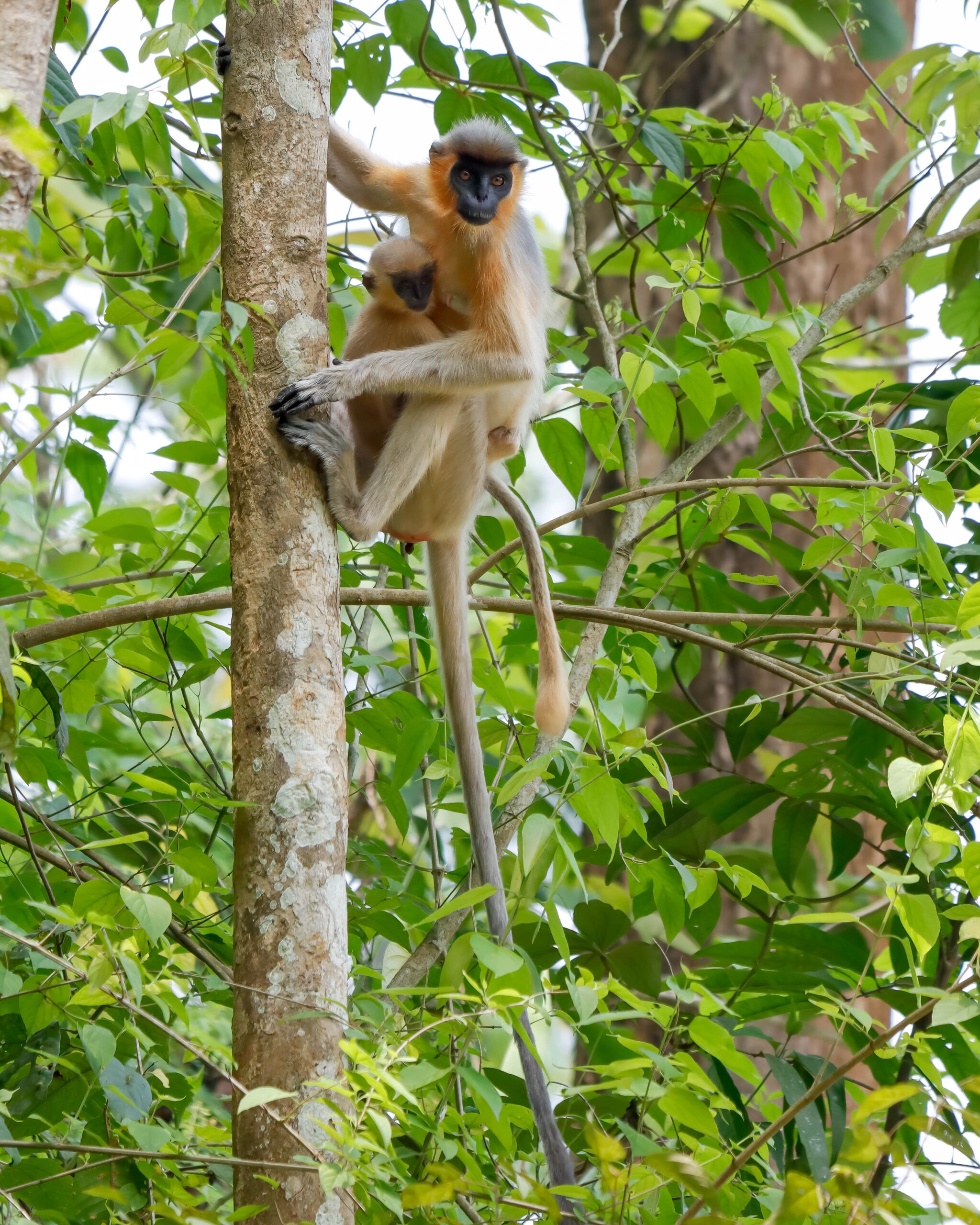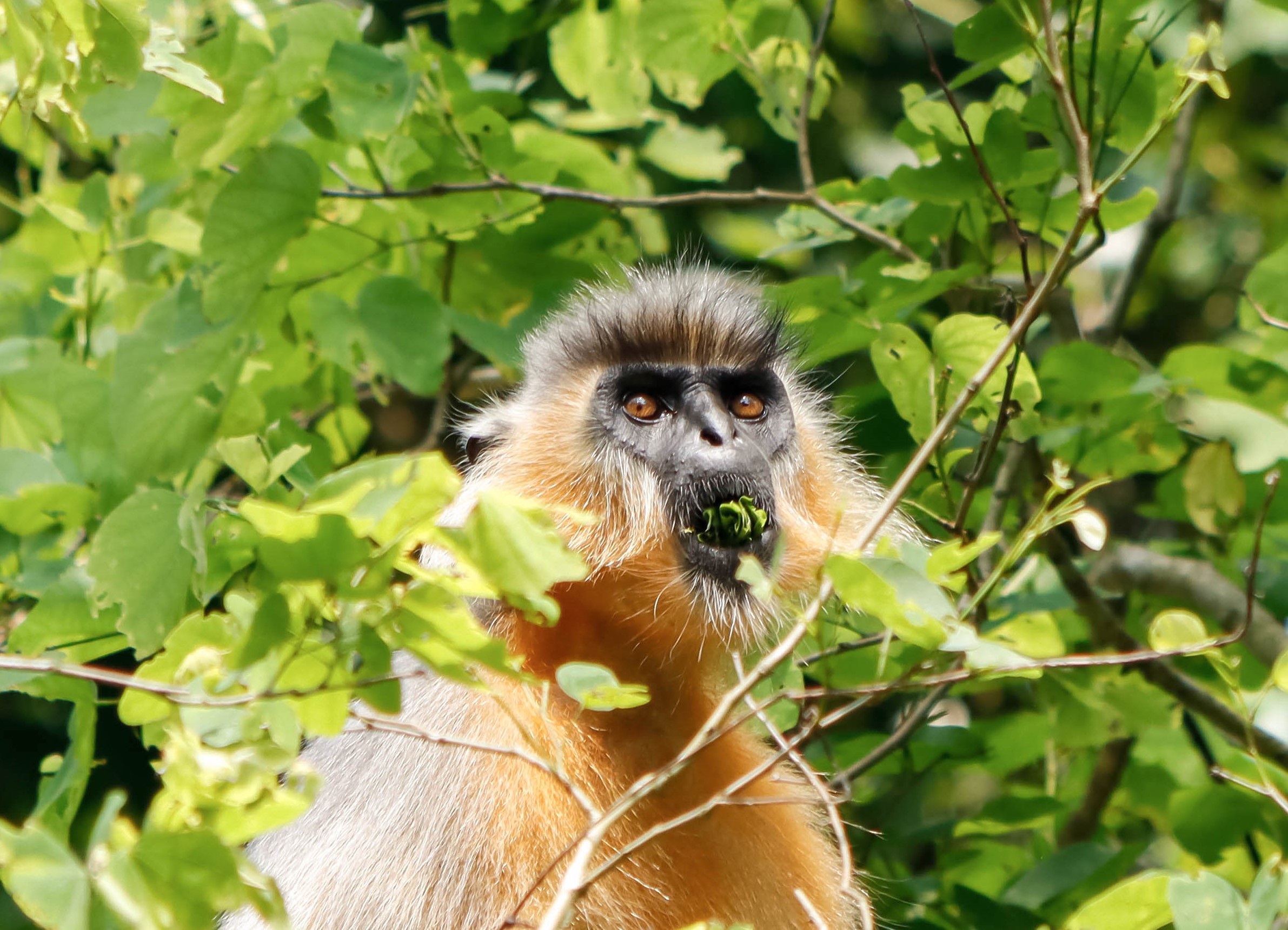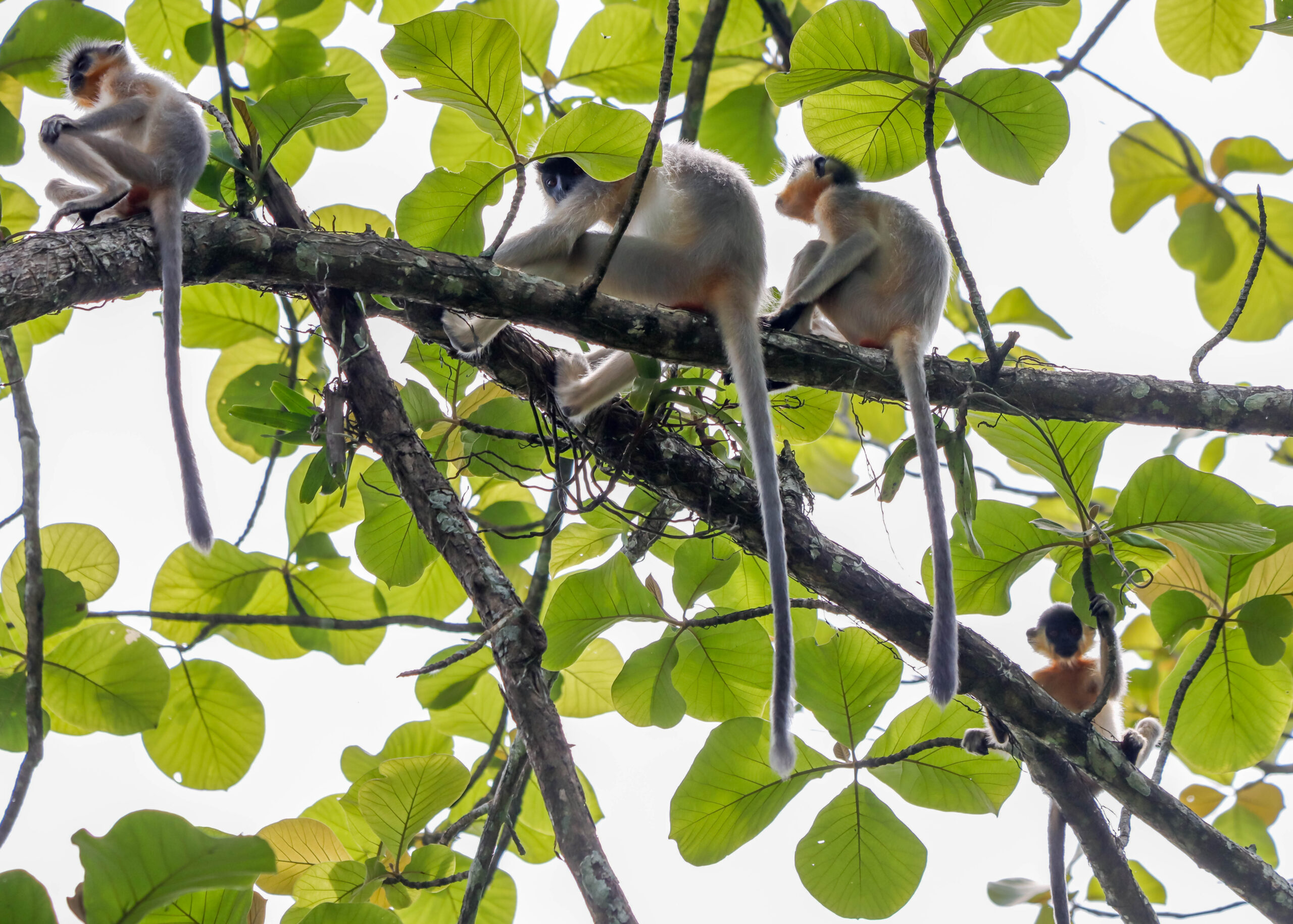Capped langur is a primate species found in India, Bangladesh, Myanmar and Bhutan. Assam, the northeastern state of India is the largest habitat of this primate species. There are four known subspecies of Capped langur, namely, Trachypithecus pileatus pileatus, Trachypithecus pileatus brahma, Trachypithecus pileatus durga and Trachypithecus pileatus tenebricus.
Appearance
The cap like fur on the head inspired their nomenclature as Capped langur. An adult langur has dark grey to black furs on their back and creamy white or golden yellow fur on the belly. The face colour of Capped langur is black. However, the colour and pattern of Capped langurs are different depending upon the subspecies. Moreover, their fur colour changes in the different seasons of the year. The males are little bit larger in size than the females. The body length of an adult male is 60-70 cm while that of the female is 50-65 cm long. The tail size of a capped langur is longer than the combined length of the head and body. The tail of an adult male is 94-104 cm and 78-90 cm in case of an adult female. The weight of an adult male is 11 – 14 kg while the female is of 9-11 kgs.

Diet and behavior
They are arboreal and diurnal. They forage on the canopies. They are social animal and a normal herd of Capped langur comprises 7-14 individuals led by an adult male. With 2-5 females, infants and sub-adults along with their male leader form a normal group. Sometimes a solitary adult male is also seen. In some cases, two or more male members are seen in a small group. Capped langurs are herbivorous. Their diet mostly consists of leaves, buds, stems and twigs. But sometimes they consume flowers, bamboo shoots, seeds and fruits as well. They usually forage early in the morning and late in the afternoon. During day time, specially in summers, they prefer to take rest.

Habitat
Capped langurs prefer evergreen rainforests and temperate forests as their habitats. Because of their food habit, they choose forests with plenty of vegetation and freshwater stream for survival. The largest habitat of Capped langur is in the state of Assam, India. They are also found in other Northeastern states like, Manipur, Meghalaya, Nagaland, Tripura, Mizoram and Arunachal Pradesh. There are some fragmented habitats in southeastern Bhutan, eastern Bangladesh and northeastern Myanmar.

Conservation and threat
As per the Red list published by the International Union for Conservation of Nature (IUCN), the Capped langur is a Vulnerable (VU) species. In the wild, they are targeted by the predators like leopard and clouded leopard. In some cases domesticated dogs are also a threat for this langur which are inhabitants of near human habitation. But above all, humans are the most dangerous threat for this langur species. Habitats of this primate are encroached and damaged by humans for various purposes. Activities like rapid urbanization, construction of road and dam, illegal logging, jhum cultivation, limestone mining, illegal encroachments etc. are some major reasons of habitat loss of this beautiful and peace loving primate species. Due to such reasons, the global population of Capped langur is rapidly decreasing. In some places of northeastern India, they are already extinct from the wild due to complete loss of habitat. Illegal hunting by some tribes of north eastern states is also one of the major threats to this species. In India, Government is taking initiative to protect this primate species. As per the Wildlife Protection Act, 1972 in India, the this primate is a Schedule I species which has the highest degree of conservation status.

Conclusion
Merely Government initiatives are not going to work without whole hearted cooperation from the public in general. This is the high time to join hands in preserving the nature and her elements for the sake of the generations to come.
Click HERE for more contents
1 thought on “Beautiful Capped langur: A Beautiful Primate”